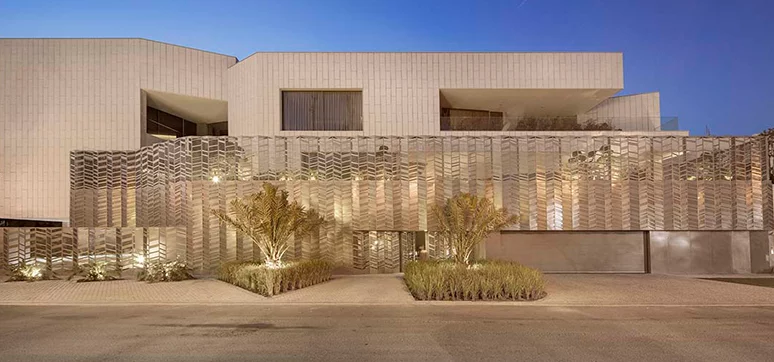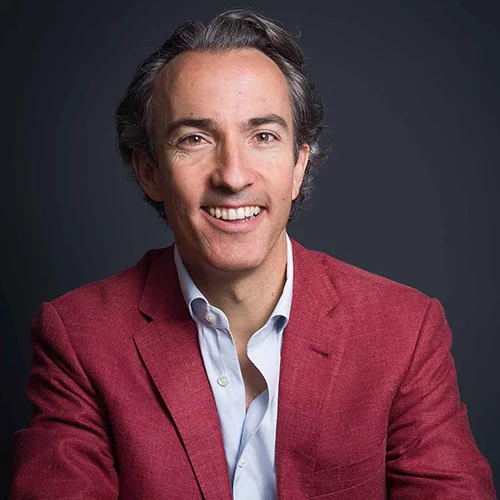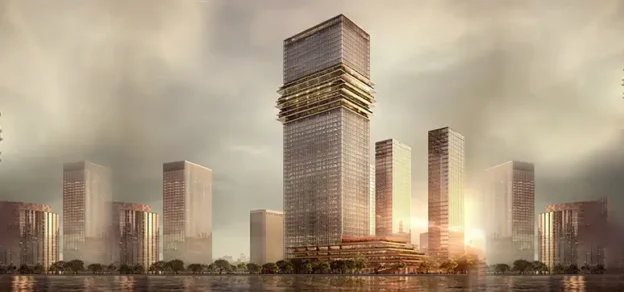Ali Mohammed T. Al-Ghanim Clinic, Kuwait
Ali Mohammed T. Al-Ghanim Clinic building stands as a pioneer in the healthcare sector, where challenging issues such as privacy and security are addressed using a new model. Courtyards attached to the façade are the driving element behind this unique typology. The program occupies the entirety of the site, and from afar the building is viewed as a monolithic element solidifying its ground and creating a high walled fortress protecting from vandalism and maximising privacy.
The courtyards are carved into the building, allowing for natural light into all the clinics. The concept of the façade generating light, views and ventilation is reversed, and the courtyards are brought inwards from the perimeter creating further privacy. Examination rooms have been located towards the closed outer façade and opened to the interior courtyards in which common space flows. Working directly with manufacturers and parametric processes that generate maximum areas based on minimum thicknesses, and adaptable geometries to incorporate efficient substructures have allowed creating a contemporary mesh that connects to the cultural identity of end users. An anodised and perforated metal sheet allows sufficient light to enter, constructing a veiled threshold in between exterior and internal courtyards.
The Ali Mohammed T. Al-Ghanim Clinic is viewed as an iconic progressive building.

Fact File
Client: Ministry of Health of Kuwait/Mr. Ali Mohammad Thuniyan Al-Ghanim
Date: 2011-2014
Architectural Team:
• Stefania Rendinelli
• Hanan Alkouh
• Gwenola Kergall
• Bruno Gomes
• Ana López Cerrato
Nirvana Home, Mesillah, Kuwait
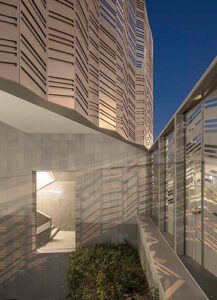
There are no words to define the concept of Nirvana, a mental state with effects in the physical and spiritual planes. This makes it difficult to explain and only those who practice meditation can understand how far they are from reaching it. These thoughts led us to name this project Nirvana. Words like “house”, “villa”, or “palace” fail to represent the scale of the building, its materialisation, or its spatial order. We prefer the term “home”. The features of a home are not physical, but rather emotional and affective, and Nirvana Home has been designed and built to satisfy the needs of the inhabitants in these terms.
This home is also a reflection of the culture within which it is developed. In this sense, its point of contact with the location at ground level is a public floor dedicated to socialisation, for the gathering of family and friends. With this purpose in mind, the spaces were designed to look at one another, detached from the surroundings and interconnected through a series of courtyards. The series of geometric voids in grey polished marble contrasts with the exterior’s white rough ceramic finish. The duality of textures is similar to that found in a marble quarry, where the polished geometric voids contrast with the natural mountain terrain.
Inside Nirvana Home, little by little, step by step, the horizon and the sea begin to dominate and the building is marked by a formidable diagonal that displaces matter so as to reach maximum transparency, allowing rooms on different façades to look towards the sea. This strategy generates a string of empty spaces that become three-dimensional courtyards holding gardens at different heights and acting as shared spaces for parents and children.
Fact File
Client: Private
Type: Residential | 6,000 Sqm
Location: Mesillah, Kuwait
Design Project Leader: Daniel Muñoz
Onsite Project Leaders: Sara Barranco, Samer Mohammad
Date: 2012- 2017
Three Gardens House, Al Funaitees, Kuwait

It all started with a question: Are you able to design an outside space that can be used 365 days a year? For moderate climates, such as the Spanish, it seems quite simple, but in the case of an extreme weather like that of Kuwait, it was necessary to think about new strategies. So we asked the client:
- Could you live in an outer space located at different levels?
- Could you classify your outdoor activities in evening and daytime actions, summer and winter events?
These enquiries may be very difficult to answer for a Mediterranean family, but definitely not for those who are used to living in adverse weather conditions and who easily know what can -and cannot- be done during the summer outdoors.
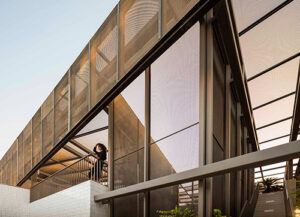
We decided to stratify the external uses according to the period of the year and the hours of the day in which these activities could be developed, and accordingly, we designed three gardens. The first one is a Wet Garden on the ground floor, which allows us to activate related spaces during the hottest periods. The pool and some fountains are located in this garden, which is surrounded by the main social spaces of the house. The Summer Garden stands in the coldest layer, 4 meters below street level. Protected by the soil’s thermal mass and the projected shadows of the housing volume, a large sheet of water is placed to catalyse the evapotranspiration that through convection rises and refreshes the air towards upper spaces.
The third one lies on the roof, an ideal place for winter days and hot summer nights. A perforated skin covers the Winter Garden, avoiding direct solar radiation and raising the privacy of its inhabitants. These three gardens become unified as a single outer space and are connected -visually and physically – through exterior stairs, we begin to develop the rest of the home from the generation of the aforementioned voids, articulating the program of required uses around them.
Another important aspect to understand is the internal circulation of the dwelling, strongly linked to the concept of “family” assumed by the clients. From the main entrance, the separation of spaces and levels acts as a filter with guests, therefore, those who circulate through it are only the ones closest to the family (including service staff and workers of the house). The circulation inside the building – both vertical and horizontal – is conceived in a fluid way, creating multiple routes and possibilities for the inhabitants to reach the rooms in a more or less direct way. The routes can be interior or exterior, offering differently qualified views and experiences.

In this sense, all “public” areas are visually connected, leaving the most private rooms more intimate and looking outwards. Opposite to the closed volume towards the outside emphasised by the uniform stone cladding is the total transparency of the spaces facing the interior courtyard covered in white ceramic tile, which reflect the light and help to illuminate the rooms in a natural way. The same perforated skin that serves as a filter on the roof – a “deployé” metal mesh of anodised aluminium has been used to maintain the privacy of the inhabitants from the neighbours’ eyes and to filter direct sunlight, serving as a shelter for the vegetation inside the aggressive Kuwaiti climate.

Fact File
Type: Residential | 1,300 Sqm
Location: Al Funaitees, Kuwait
Architects: Nasser B. Abulhasan Joaquín Pérez-Goicoechea
Date: 2016
Co-Authored:
Dr. Nasser B. Abulhasan is the Principal & Founding Partner, AGi Architects. He received a Doctors in Design from Harvard Graduate School of Design, and Masters in Architecture from the Harvard Graduate School of Design. His area of research is on sustainable developments in arid climates and focuses on the perception of light in buildings.
